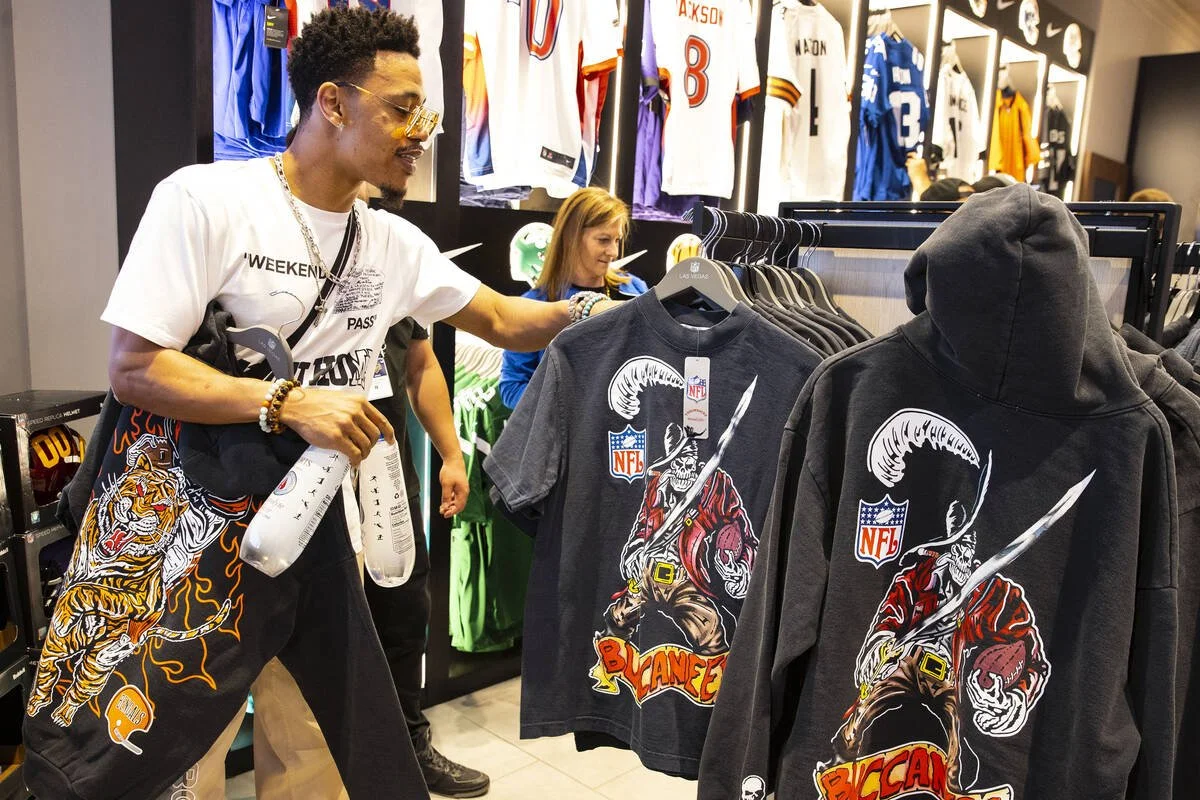Build Fans. Not Customers.
Fans + Community win. And brand merch is your way to do it.
Sports analogies are great, and often rooted somewhere in real life too. There’s a quiet revolution happening in business right now. And it’s one that has nothing to do with AI, blockchain, or the latest social platform. It’s something more human, and oddly, more old-fashioned. The most successful brands today aren’t focused on selling to customers. They’re focused on creating fans.
A customer might buy what you sell. A fan tells other people to buy it. A fan proudly wears your logo. A fan forgives your mistakes. A fan makes you part of their story.
For decades, companies have treated loyalty like a metric - something to be earned through discounts, perks or points. But true loyalty isn’t bought. It’s felt. And increasingly, that feeling is being built not through ads or email campaigns, but through something tangible, even tactile: brand merchandise.
When someone pulls on a hoodie with your name across the front, or sips from a mug with your logo on it, that’s not just a transaction. It’s a small act of identity. It says: I like this brand. I believe in what it stands for. In a culture defined by what we wear, post and share, merchandise has become a language of belonging.
You see the same psychology in sports. Fans of the Yankees, Manchester United, or the Chicago Bears aren’t loyal because of constant victories - in fact, their devotion often deepens in the hard years. They wear the jersey through losing streaks, buy the scarf every new season, and defend their team in every debate. That’s not customer behavior; that’s faith. Great brands tap into that same emotion. They understand that true fandom isn’t about performance. It’s about identity, continuity, and community - the unspoken bond between those who believe in something, even when it’s imperfect.
Few companies understand this better than Harley-Davidson. The motorcycle maker doesn’t just sell bikes - it sells membership to a brotherhood. Walk into any Harley event and you’ll see leather jackets covered in patches, shirts emblazoned with the company’s winged emblem. These aren’t marketing materials; they’re declarations of allegiance. The Harley Owners Group - known as H.O.G. - is one of the most powerful examples of what happens when a brand becomes a community. People don’t just ride Harleys. They live Harley.
Or take Glossier, the beauty brand born from a blog. Founder Emily Weiss built the company by listening to her readers, turning her audience into collaborators. When Glossier released its signature pink hoodie, it wasn’t just merch - it was a uniform. Fans snapped selfies in it, tagged the brand, and helped transform Glossier from a cosmetics company into a cultural symbol. Owning that hoodie meant being part of the conversation.
Even Lego, the Danish toy giant, has cultivated a similar devotion. Its “Lego Ideas” platform invites fans to submit their own designs, some of which end up as official products. What could be more powerful than buying a Lego set designed by another fan like you? It’s community baked into commerce.
And then there are the quieter examples: Mailchimp, the email marketing service, gives out playful branded socks and hats to clients and employees alike. The items are whimsical, often weird, and exactly on-brand. People wear them because they capture the company’s spirit - quirky, clever, and creative. The merchandise doesn’t sell a product. It sells a personality.
At their best, these brands have turned merch into something far beyond swag. They’ve made it a way to feel seen. In a crowded marketplace, where people are bombarded with choices and ads at every scroll, feeling seen by a brand - understood, even mirrored - is a rare thing. It’s no wonder fans respond so fiercely.
Of course, this isn’t as simple as slapping your logo on a t-shirt and calling it community. Authenticity matters. Fans can smell insincerity a mile away. The merchandise has to mean something. It needs to reflect values, humor, or culture that people genuinely want to associate with. When it feels forced, it fails.
But when it works, the payoff is enormous. Fans don’t just come back; they bring others with them. They defend your brand online. They turn your logo into shorthand for belonging.
And that’s the quiet magic of fandom. You can’t buy it, not really. You can only invite it. By being clear about who you are, what you stand for, and what kind of world your brand is building. Merchandise, in this sense, is both symbol and invitation.
Because in the end, people don’t wear your brand because they like your product. They wear it because, somehow, it feels like them.

